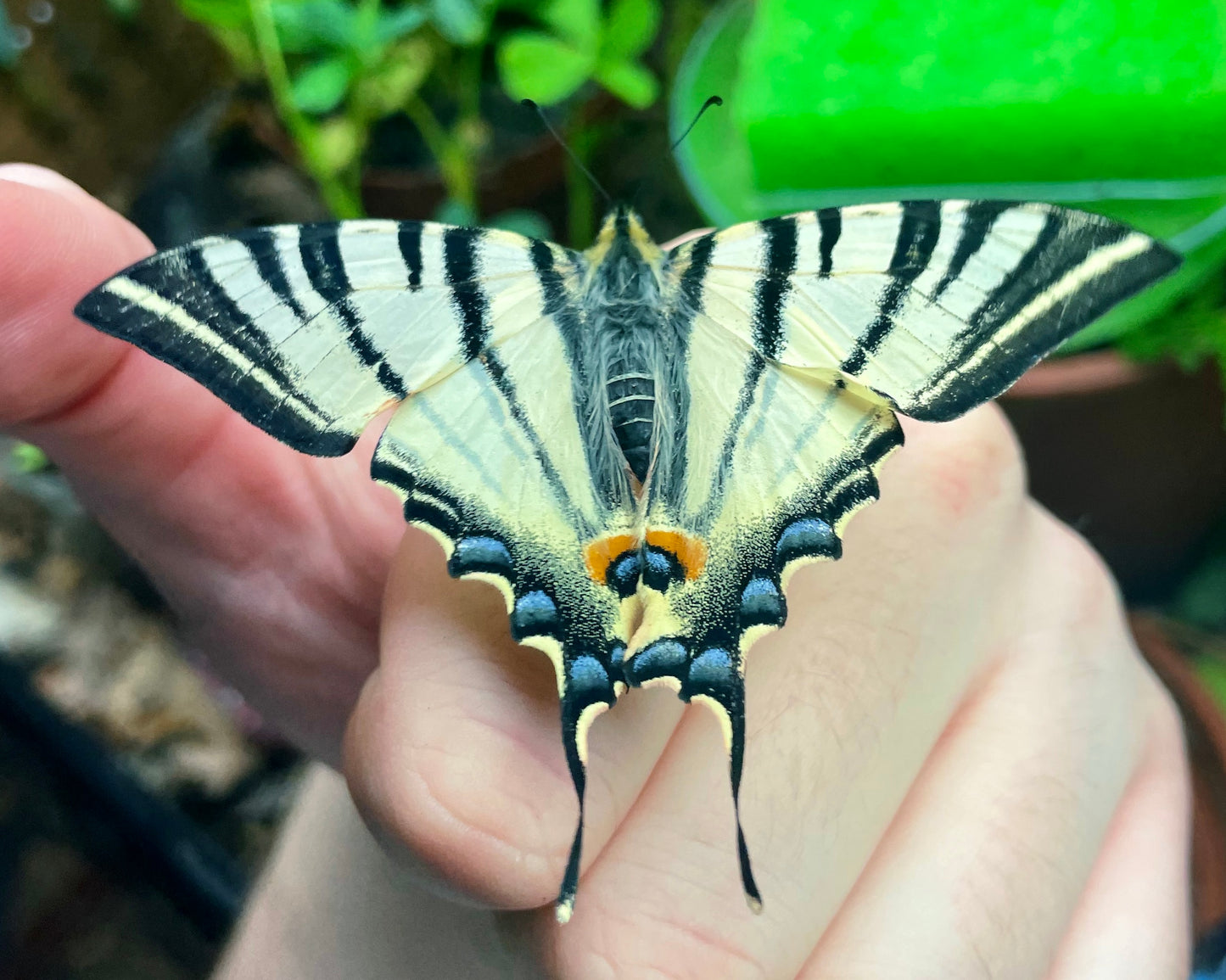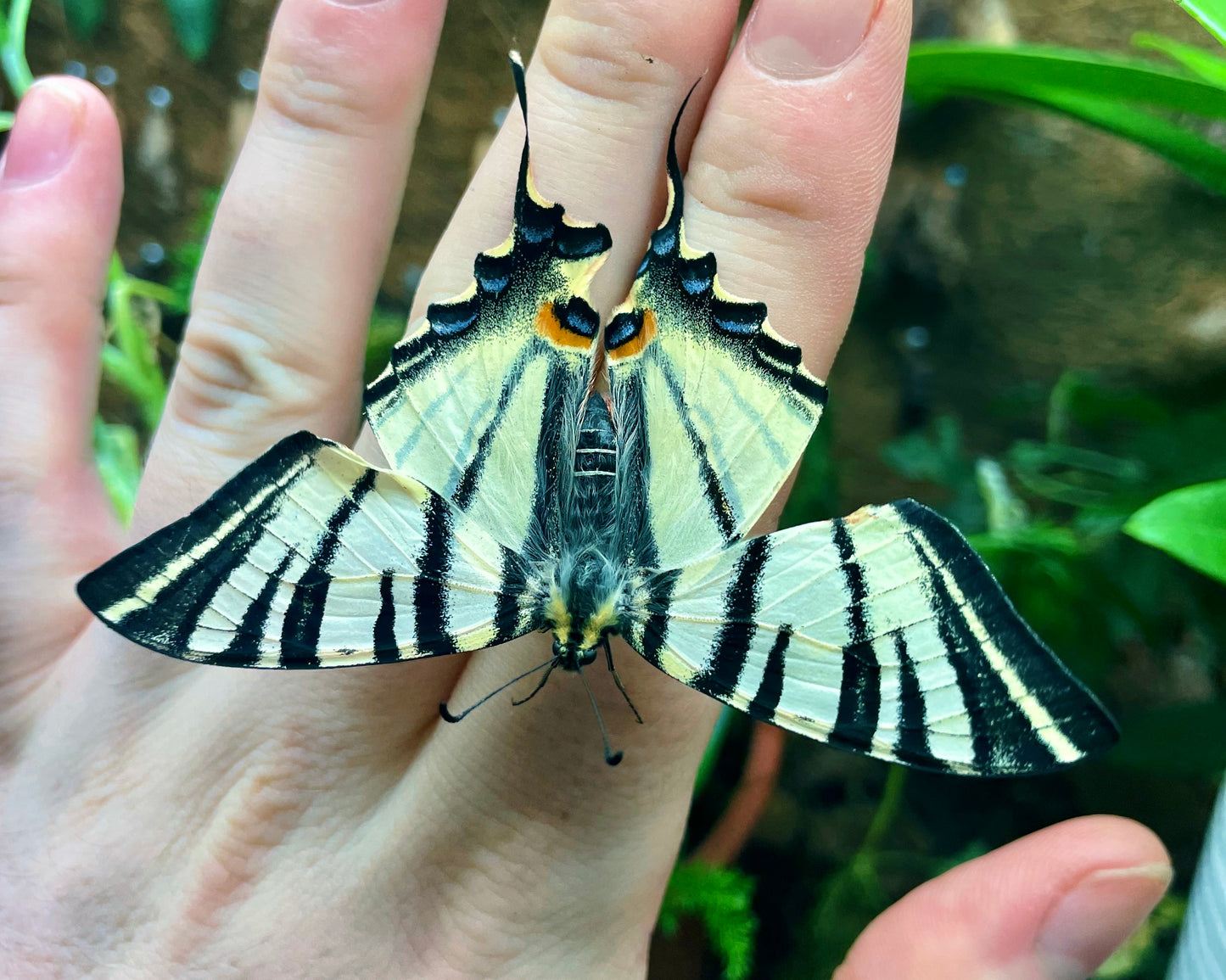Bugs & Butterflies UK
Scarce Swalowtail PUPAE (Iphiclides podalirius)
Scarce Swalowtail PUPAE (Iphiclides podalirius)
Couldn't load pickup availability
Iphiclides podalirius, commonly known as the Scarce Swallowtail, is a stunning butterfly belonging to the family Papilionidae. It is widely distributed across Europe, North Africa, and parts of Asia, often found in warm, sunny environments such as open woodlands, orchards, and meadows. Renowned for its elegant appearance and graceful flight, the Scarce Swallowtail is a favorite among butterfly enthusiasts.
The Scarce Swallowtail is a large butterfly, with a wingspan of 6–9 cm. Its wings are pale white, yellow or cream, marked with bold black tiger-like stripes, giving it a distinctive and eye-catching appearance. The hindwings feature elongated "tails," a characteristic feature of swallowtail butterflies. Additionally, the hindwings have blue crescent-shaped markings and an orange eyespot near the base, adding to its beauty.
This species thrives in warm, open habitats, including orchards, gardens, vineyards, and scrublands, often at lower altitudes but occasionally in mountainous regions. Its range extends across southern and central Europe, North Africa, the Middle East, and parts of western Asia. While widespread, its population density can vary, and it is considered a species of conservation concern in some regions due to habitat loss and agricultural practices.
Iphiclides podalirius is a strong flier, often seen gliding gracefully over open landscapes. Adults are active during the day and feed on nectar from a variety of flowers, including thistles, lavender, and fruit blossoms. They are most commonly observed between April and September, depending on the climate, with one or two generations per year in most regions.
The larvae feed on species like wild plum (Prunus), hawthorn (Crataegus), and cherry (Prunus avium). The caterpillars are green with yellow and white markings, providing excellent camouflage among the leaves, and are not at all dificult to rear. Very rarely, this species is observed as a migrant to the UK.
Host plants: Plum, Pear, Peach, Blackthorn (Prunus species).
Difficulty: Easy to rear (1/10) but breeding is challenging.
Temperature: Room temp. for rearing; adult butterflies need warmth to breed.
Lifecycle: Two broods per year; pupae overwinter.
Share



